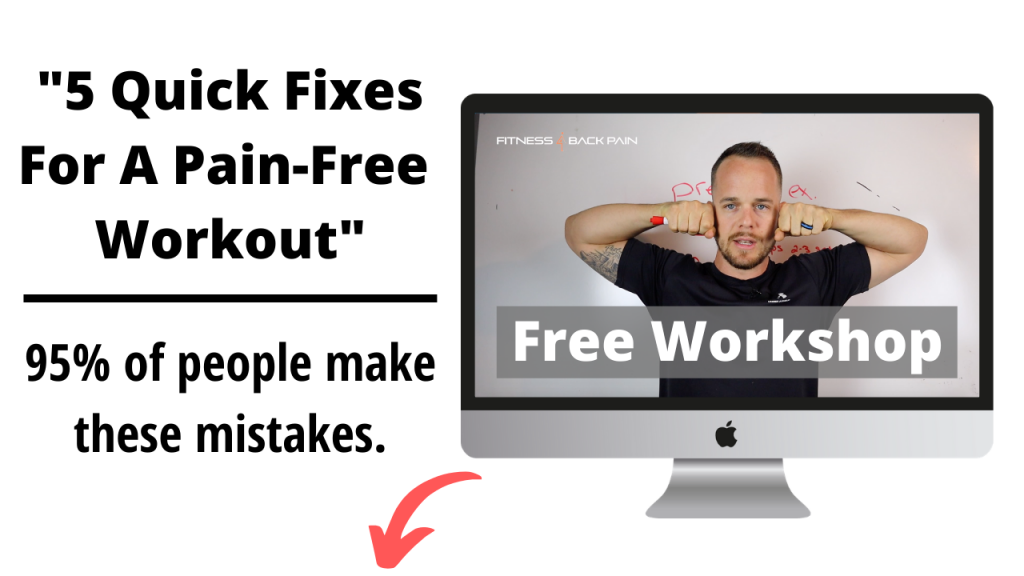The theme here at Fitness4BackPain.com is to teach average people how they can learn to grasp the potential root cause of their back pain and with the guidance of their own physician, use natural and non surgical ways to bring about relief. A big step in really learning the best way to treat your back pain is to understand what is causing the pain or which movements make the pain worse. We call these “pain or injury mechanisms”. I mentioned these a few times in the latest blog post titled 9 Lower Body Exercises to Decrease Back Pain
I am going to break this topic down into a 3 part series of tests you can do at home to help build your own hypothesis of whats going on in your back.
Compressive loads are probably the more common pain mechanisms for the average gym goer. Typically it’s your dead lifters, squatters, over head pressers etc. that deal with this pain more often. On the other hand, it doesn’t take much weight to exacerbate an injured disc so the goal here is to use this test no matter your background or current physical shape. I want to help you understand how to reverse engineer your back pain but first you need to learn how to conduct some basic tests.
Hold on tight, I’m going to have to get a bit “science-y” on you.
If your pain is severe before even doing these tests I would see a specialists first before taking matters into your own hands. These basic tests are for those who’s pain is manageable and have been cleared for physical activity.
Compression Tests 1: The Heel Drop Test
Tests for 2 things: Schmorl’s Nodes and fractured end plates (or other potential damage to the disc structure).


When doing a compression test your only looking for whether or not the pain is worsened by any kind of compression load. What your going to use is what is known as the heel drop test. It’s used by clinicians (the ones that don’t believe in just handing you prescriptions) to find clues to whether or not there is room to support their hypothesis of potential damage to the discs. This is not the end all be all it’s just a simple way to potentially build a hypothesis regarding your pain and potential treatment. To successfully do a heal drop test this is what you are going to do.

You only want to do this in a standing position. It’s pretty easy, rise up on the balls of your feet and then drop down to a flat foot. This causes a rapid compressive load on the spine. Since you are doing this alone at your house proceed with caution and listen to your body. If you have zero pain the first drop then you can do it again a little more aggressively. The goal isn’t to create an injury but to see if the compressive load produces any dull or boring pain from a potential injury you already have. Make note of what you feel, where your pain is an how you would describe it in detail. Note: When doing the drop you don’t want to lower yourself slowly but drop fast into the flat foot position.
Seated Compression Test
Testing for: Determining whether the compression intolerance is made worse or recreated by posture.
This is a short video of a similar test being done on a gymnast. He talks kind of fast and he uses extension in his test as well. All your doing is the neutral spine and hollowed or hunched position, not the extension.
When doing the seated compression test your testing for potential posterior disc herniations. This test is a simple way to help build your hypothesis of what could be causing your pain. To complete this test find a stool or chair that you can reach down and grasp the arm rest or seat bottom comfortably. The first test will be done with a neutral spine (sitting upright). When in position pull down on the seat to cause a compressive load to the spine. Take note of any pain or feeling you experience. The second test will be done in the slouched or hollowed position. Pull down on the seat for 4-5 seconds and release. Take note of any increase in pain or feeling you notice.
Normally the pain is felt in the slouched position. Even with a herniated disc most people don’t feel much pain when the spine is neutral. Remember, these tests are not to be done to the point of a painful experience but rather an immediate positive pain response or obvious pain mechanisms from the test.
What you will learn form these tests are extremely valuable. The results from these tests in the right hands can really help when putting together a rehab plan specifically for you. The more you know about what causes your pain the better off you will be!
I hope this helps! Stay tuned for next weeks Part II: Extension Tests!
“The day you give up mentally is the day you decide that your pain will control your life”
WIlliam
Reference: McGill, Stuart. (2007) Low Back Disorders. Waterloo, Canada: Human Kinetics.


1 thought on “2 Simple tests to help diagnosis your back pain: Part I Compression”
Comments are closed.